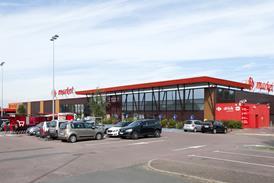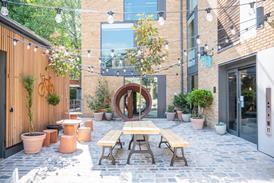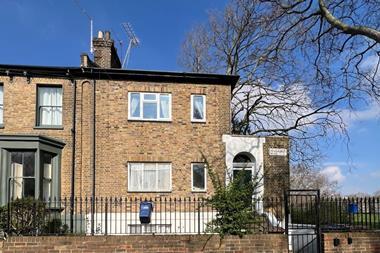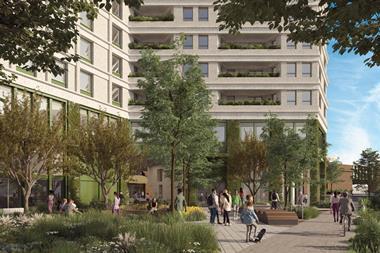My regular commute to work includes a quarter-mile walk between rail and tube, along Newgate Street in the City of London near St Paul’s.

This route offers a welcome opportunity to watch the ongoing transformation of 81 Newgate Street, former home of BT, into Panorama St Paul’s, future home of HSBC.
The retrofitting work being undertaken by contractor Mace on behalf of owner Orion Capital Managers is of the deepest possible variety. The building has been stripped right back to its rough concrete skeleton, on to which a gleaming steel frame has been grafted. The work so far has substantially reshaped the building’s height and footprint.
When complete, the project will yield 556,000 sq ft of new office space plus 50,000 sq ft for other uses, up from the 302,265 sq ft of the original 1984 BT building.
As I passed this morning, the rainclouds parted for long enough for a dab of bleary sun to light up the Portland stone and granite facade, sections of which are currently being reinstalled.
In all, 1,500 tonnes of stone from the old BT Centre, which gave off the unwelcoming vibe of a fortified bunker, have been reclaimed and refashioned into more elegant stone columns. They will frame the extensive glazing that will be installed at some future point before HSBC moves in, in late 2026.
The building provides an eye-catching example of what can be done with an outdated asset, given sufficient vision (and budget).
Architect KPF described the original building as “a quarry from which to source materials” and said the circular approach saved 465kg/sq m (43kg/sq ft) of embodied carbon dioxide, or about half of the carbon footprint of the new-build alternative.

Of course, not every obsolete building can follow this particular project’s lead, but increasingly developers will need to prove why a circular approach is not possible if they hope to knock a building down and start over.
Retailer M&S is, of course, still awaiting a new verdict from secretary of state Michael Gove about its plan to raze and rebuild at Marble Arch, after Gove’s initial decision to preserve the existing building was struck down through judicial review.
This week, The Pollen Estate was refused permission to demolish two 1950s buildings on a corner in Mayfair, as Westminster city councillors rejected plans to redevelop 18-20 Savile Row. The council is consulting on an update to its adopted City Plan that will favour retrofitting over rebuilding, but planning officers evidently didn’t need the revised wording to recommend rejecting the Savile Row scheme.
In their report, city planners advised Westminster’s major developments committee that the proposed development “fails to adhere to circular economy principles and principles of sustainable design, both of which prioritise the retention, refitting and refurbishment of existing buildings”.
No doubt there will be an appeal against the refusal, but developers will readily detect which way the wind is blowing, in central London at least.
Anyone in any doubt of what the future looks like should take a short walk down Newgate Street to St Paul’s to witness the BT Centre’s incredible transformation.































No comments yet